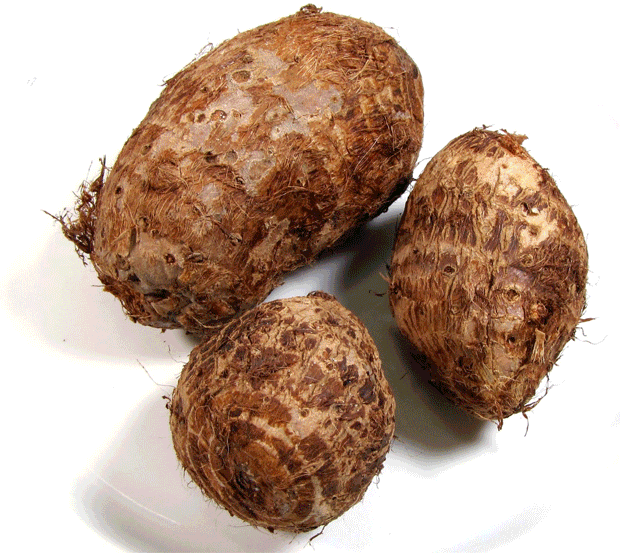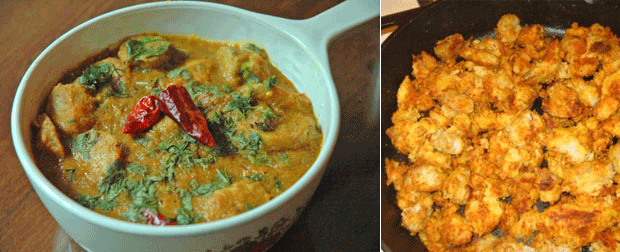|
Taro is a root vegetable that is eaten in many
different cultures around the world and has a rich history, with many
possible recipes. The leaves of the taro plant are also used as a
vegetable. Taro root is easily digestible and the leaves are a good
source of vitamins A and C.
|
|
 |
|
What is Taro?
Taro is the root of the taro plant, which is grown in semi-tropical and
tropical climates all over the world. Taro root is inedible raw and must
be cooked thoroughly to leach out the calcium oxalate (associated with
gout and kidney stones), preferably with a pinch of baking soda. Taro
leaves should also be cooked before eating. Taro root is used in
curries, prepared in similar ways to potatoes, cooked with lentils, used
in baking, and even used in dessert recipes. Taro chips, also known as
vegetable chips, are available in many health food stores. Taro has a
mild, nutty flavor.
|
|

|
|
The Health Benefits of Taro
Taro root is often used in a similar fashion to a potato, but in fact
has better nutritional qualities than a potato. It has almost three
times the dietary fiber, which is important for proper digestive health
and regularity. Fiber can also fill you up and make you feel less hungry
with fewer calories. Taro root has a low Glycemic Index, as opposed to
potato which has a high Glycemic Index. A low GI means that taro effects
blood sugar levels slowly, without the peaks and crashes of a high GI,
which lead to increased hunger later on. Eating a diet of low GI foods
can also help prevent diabetes.
Taro is nutritious, and is an excellent source of potassium, which is an
essential mineral for many bodily functions. Taro also contains some
calcium, vitamin C, vitamin E and B vitamins, as well as magnesium,
manganese and copper. Taro leaves contain good amounts of vitamins A and
C, fiber and a relatively high amount of protein.
|
|

|
|
Cautions About Taro
Eating taro can lead to kidney stones and gout as well as other health
complications if it is not prepared properly by boiling for the
recommended amount of time. It can also be steeped in water overnight
before cooking to further reduce the amount of oxalates. To absolutely
minimize risk, milk or other calcium rich foods should be eaten with
taro in order to block oxalate absorption. However, taro is a staple
food for many people around the world and should not be considered a
high risk food after it is cooked.
Taro has many benefits over potatoes but does actually contain more
calories, gram for gram, with 142 calories per 100 grams to the 93
calories per 100 grams of a potato. However, with the additional
benefits of fiber and a low Glycemic Index, taro is still a good choice
as a starch vegetable.
|
| |
|
|